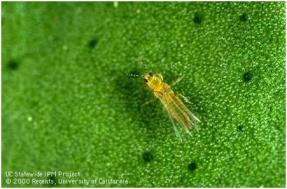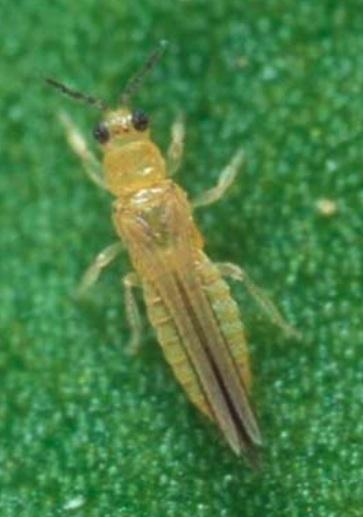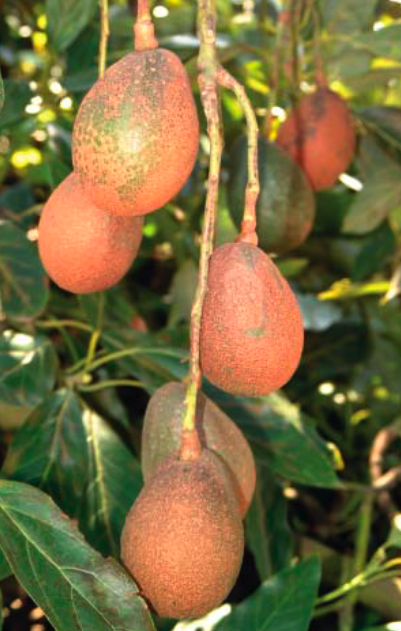The major thrips pest attacking California avocados is the avocado thrips, Scirtothrips perseae Nakahara. Originally noticed in 1996, 99% of California avocado acreage is now infested to some degree with this pest.
Identifying avocado thrips
- Avocado thrips larvae and adults are found primarily on the undersides of immature leaves and fruit.
- First instar larvae are pale white-yellow, while second instar larvae are much larger and bright yellow in color.
- Adult avocado thrips are straw yellow in color and they may have greenish abdomens.
- Adult avocado thrips have three bright red dots between their eyes.
- Greenhouse thrips are much larger and black in color.
- A western flower thrips is yellowish-brown in color, has bristles on the tip of its abdomen and is about 33% larger than avocado thrips. It is never found feeding on leaves and fruit, but is often found in avocado flowers feeding on pollen.
- Avocado thrips are most common from fall through spring on young leaves.
- They are more commonly found in groves near the coast because of the cooler coastal temperatures.
- Thrips usually decline in numbers when temperatures rise and humidity declines in the summer over a period of several days.
- Avocado thrips larvae and adults exhibit highest survivorship, longevity, and fecundity at moderately cool temperatures (68-76ºF).
Life stages of avocado thrips
- Avocado thrips have six distinct life stages.
- Females lay eggs inside young leaves and fruit.
- Two larval stages develop and feed on young leaves and fruit.
- The two pupal stages are non-feeding and pupation occurs either in cracks or crevices on branches or in leaf duff below trees.
- Adults feed on leaves and fruit, and because they can fly, can disperse to adjacent trees to search for young leaves and fruit in which to lay eggs.


